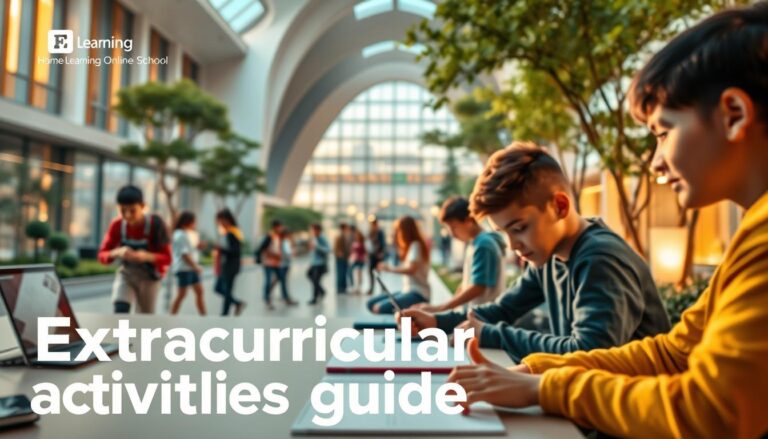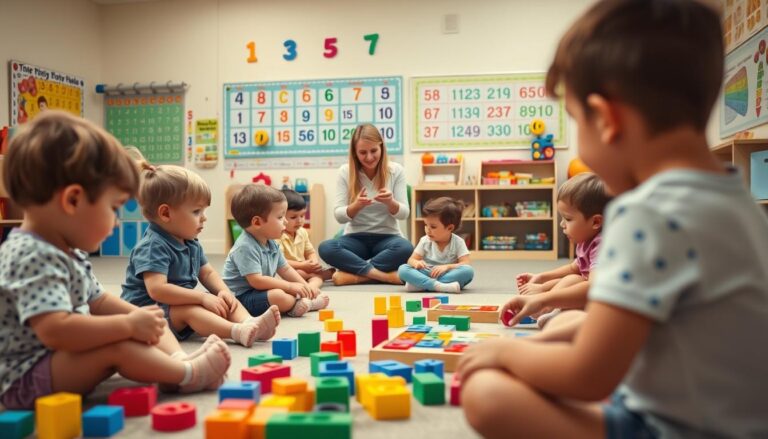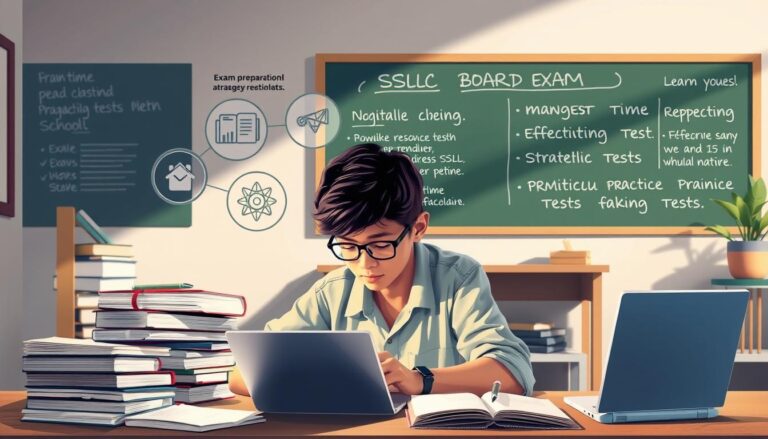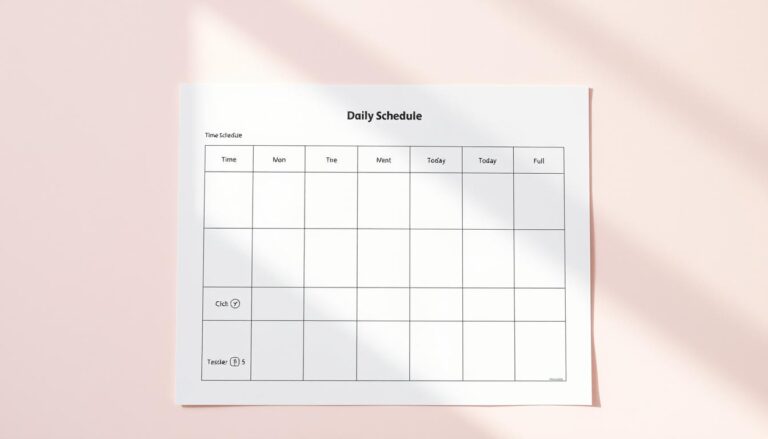Maximize Your Child’s Learning at Home: Tips for an Effective Environment
Creating a productive learning environment at home can significantly impact your child’s academic success. As a parent, you play a crucial role in fostering a structured and supportive space that encourages growth and engagement. Whether your child is attending school online or supplementing their education, a well-organized setup can make all the difference.
With the flexibility of online learning, families can adapt schedules to fit their needs. Programs like Summit Learning Charter and ASU Prep Digital offer tailored solutions that cater to different learning styles. These programs not only provide academic rigor but also incorporate extracurricular activities, keeping students engaged even when parents are busy.
Designating a specific study area and maintaining a consistent routine helps students stay focused. Technology is a powerful tool, but it’s equally important to ensure that the environment is free from distractions. By setting clear goals and communicating regularly with teachers, you can help your child thrive in their educational journey.
Our guide is here to support you in creating the right balance between structure and flexibility. We’ll explore practical steps to set up a learning space, manage schedules, and leverage technology effectively. Empower your child to succeed with a nurturing environment that supports their unique needs and fosters a love for learning.
Introduction: Maximizing Your Child’s Home Learning Environment
As education evolves, home learning has become a cornerstone for many families, offering flexibility and personalized growth. Parents now play a pivotal role in shaping their child’s academic journey, often working closely with teachers to ensure a smooth transition to online environments.
The shift from traditional classrooms to virtual learning highlights the importance of parental support. Parents can effectively manage their child’s assignments and foster a structured routine, which is crucial for academic success. Research emphasizes that consistent time management can significantly enhance learning outcomes, helping children stay focused and engaged.
Adjusting from rigid school schedules to flexible online learning can be challenging but also rewarding. Parents act as bridges between teachers and learners, ensuring their child’s needs are met. This section will explore strategies to create an effective learning environment, offering practical tips on organization, routine, and engagement to empower your child’s educational journey.
Understanding Virtual Learning and the Parent’s Role
Virtual learning is transforming how education is delivered, offering flexibility and accessibility for families worldwide. As we navigate this digital shift, it’s crucial to understand the roles each player takes in ensuring student success.
Defining the Virtual Classroom
A virtual classroom is more than just a digital space. It’s an interactive environment equipped with video conferencing tools, online resources, and collaborative platforms. This setup allows students to engage with peers and teachers remotely, fostering a sense of community despite physical distances.
Key features of these platforms include live classes, discussion forums, and access to multimedia resources. Such tools make learning dynamic and cater to different learning styles, ensuring every student can thrive.
Transitioning from Traditional to Online Learning
Shifting from a traditional classroom to online learning can be challenging but also rewarding. Parents play a vital role in this transition by providing support and maintaining a structured routine.
Research shows that consistent parental involvement can boost academic success. Parents act as Learning Coaches, helping with assignments and encouraging regular study habits. This role is especially important in the early years, where hands-on guidance is needed.
Online platforms offer various resources, such as interactive tools and forums, to aid parents in their role. For instance, Learning Coach Central provides 24/7 support, helping parents navigate the virtual learning ecosystem effectively.
By understanding and embracing their role, parents can significantly contribute to their child’s educational journey, ensuring a smooth transition and fostering long-term success.
Parent’s Guide to Being a Virtual Learning Coach: Key Responsibilities
As a Learning Coach, you play a vital role in your child’s educational journey. This role goes beyond traditional parenting, requiring a blend of guidance, support, and oversight to ensure your child thrives in a virtual learning environment.
Supporting Educational Growth
Your primary responsibility is to support your child’s educational growth without doing their work for them. This involves:
- Creating a structured study schedule
- Monitoring progress
- Providing constructive feedback
By setting clear goals and maintaining open communication with teachers, you help your child stay on track and understand their lessons better.
Encouraging Self-Discipline and Time Management
Helping your child develop self-discipline and effective time management skills is crucial. This can be achieved by:
- Encouraging regular study habits
- Teaching your child to prioritize tasks
- Using tools like planners or digital calendars
These strategies help your child become more independent and self-motivated in their learning.
Remember, your role as a Learning Coach is to empower your child with the skills and confidence they need to succeed. With consistent support and the right tools, you can help them achieve their full potential in a virtual learning environment.
Designing an Organized Learning Space for Students
Creating a dedicated learning environment at home is a crucial step in supporting your child’s academic success. A well-organized space not only enhances focus but also fosters a sense of routine and responsibility. Every family has a unique process for setting up a study area, but there are key elements that can make this space both functional and comfortable.
Minimizing Distractions at Home
A quiet, distraction-free zone is essential for effective learning. Consider designating a specific area of your home as the primary study space. This area should be away from high-traffic zones and equipped with minimal noise levels. Research shows that a quieter environment significantly improves concentration and productivity.
Additionally, incorporating calming elements like soft lighting or neutral colors can create a serene atmosphere. For instance, green walls can promote calmness, while blue accents can enhance focus. These small touches can make a big difference in your child’s ability to stay engaged.
Arranging Essential Technology and Furniture
When setting up the learning space, ensure that it is equipped with the necessary technology and furniture. A sturdy desk, a comfortable chair, and adequate lighting are fundamental. Positioning the desk near a natural light source can boost productivity, as natural light is known to improve mood and focus.
Incorporate tools like planners or digital calendars to help your child manage their time effectively. Open storage solutions for books and supplies can promote independence, while closed storage can keep teacher materials organized. This balance helps maintain a clutter-free environment, reducing distractions and allowing your child to concentrate on their studies.
Many successful online schools, such as those offering preschool programs, emphasize the importance of a well-organized study space. By tailoring the environment to your child’s needs, you provide them with the best opportunity to thrive academically. Remember, every family’s process is unique, so feel free to adapt these tips to suit your child’s preferences and learning style.
Crafting Structured Daily and Weekly Study Schedules
Establishing a structured study schedule is essential for fostering student success across all grade levels. Whether your child is in elementary school or high school, a well-planned routine helps manage time effectively and reduces stress. This section explores how to create focused study sessions and incorporate timely breaks to enhance learning outcomes.
Planning Focused Study Sessions
Effective study sessions begin with clear goals. For high school students, breaking study time into focused blocks of 30 to 45 minutes is ideal. These blocks should target specific subjects or topics, allowing your child to concentrate without distractions. Consider using digital tools or planners to map out these sessions, ensuring they fit seamlessly into the daily routine.
- Set specific learning objectives for each session.
- Use timers to keep study blocks on track.
- Encourage active learning techniques during each block.
For younger students, shorter, more engaging activities can maintain their interest and energy levels. Incorporating elements like hands-on experiments or creative projects can make study sessions more enjoyable and effective.
Incorporating Timely Breaks
Breaks are crucial for maintaining focus and preventing burnout. High school students should take 5 to 10-minute breaks between study blocks, while younger students may benefit from more frequent, shorter breaks. These pauses allow the brain to recharge and retain information better.
- Schedule breaks to avoid prolonged screen time.
- Encourage physical activity or creative pursuits during breaks.
- Ensure breaks are timed to maintain the overall study schedule.
By balancing focused work with regular breaks, students can stay energized and motivated throughout the school year. This structured approach not only supports immediate academic success but also fosters long-term habits that promote continuous growth.
Setting Clear Objectives and SMART Goals for Academic Success
Setting clear objectives and using the SMART goal framework can significantly enhance your child’s academic performance. As a guardian, helping your child set specific, measurable, achievable, relevant, and time-bound goals can lead to improved focus and success.
Research indicates that students who set written goals are 42% more likely to achieve them. SMART goals are particularly effective, with studies showing a 20% average improvement in academic performance. These goals help break down larger objectives into manageable steps, making it easier for your child to stay on track.
Aligning study materials with your child’s grade level is crucial. For example, a 5th grader aiming to improve their language conventions score from 63% to 70% can benefit from targeted practice exercises. Guardians should regularly review these goals to monitor progress and work habits, ensuring they remain relevant and achievable.
Encourage your child to take ownership of their learning by setting clear objectives. This fosters responsibility and accountability, essential for long-term academic success. With consistent support and the right tools, your child can achieve their full potential and thrive in their educational journey.
Engaging with Online Teachers and Learning Platforms
Effective communication with online teachers and mastering Learning Management Systems (LMS) are key to a smooth virtual learning experience. As a parent, fostering this connection ensures your child stays engaged and supported throughout their academic journey.
Navigating Virtual Classrooms
Virtual classrooms are dynamic spaces where students interact with teachers and peers through video conferencing and collaborative tools. To help your child navigate these platforms:
- Encourage them to log in early to familiarize themselves with the interface.
- Ensure they participate actively in discussions and group activities.
- Teach them to use built-in tools like chat and screen sharing effectively.
Regular check-ins with teachers can help address any challenges your child might face in the virtual classroom.
Utilizing Interactive Learning Tools
Interactive tools like discussion boards, quizzes, and multimedia resources can enhance your child’s engagement. Encourage them to:
- Ask questions during live sessions or through messaging systems.
- Use interactive simulations to explore complex concepts visually.
- Submit assignments through the LMS to stay organized.
These tools not only make learning more enjoyable but also help students stay on track with their coursework.
Setting clear expectations for communication is essential. Encourage your child to reach out to teachers promptly when they have questions or need clarification. Establishing a routine for checking updates on the LMS ensures they never miss important announcements or deadlines.
Balancing Family Life and Virtual Learning Commitments
Finding harmony between family responsibilities and virtual learning is a challenge many families face today. As we navigate this modern educational landscape, it’s essential to create a balance that supports both academic success and family well-being.
Coordinating Parental Schedules
Aligning family schedules with virtual learning obligations is crucial. Parents can help by setting clear priorities and sharing responsibilities. For instance, creating a shared digital calendar can help track school assignments, work commitments, and family time. This approach ensures everyone stays informed and aligned.
Integrating Extracurricular Opportunities
Extracurricular activities enrich a child’s education and personal growth. Even with busy schedules, families can find creative ways to incorporate these activities. For middle school students, balancing academics with sports or clubs can be achieved by setting realistic goals and using time management tools effectively.
Regular schedule reviews help maintain this balance. By fostering open communication and adaptability, families can support their child’s educational journey while preserving quality family time. This balanced approach not only eases pressure but also fosters a nurturing environment for growth.
Leveraging Support Systems and Digital Tools for Student Success
Empowering your child’s education at home involves more than just creating a study space. It’s about harnessing the power of digital tools and support systems to monitor progress and foster growth. With the right resources, you can ensure your child stays on track and thrives academically.
Monitoring Progress and Assignments
Digital tools like those from ASU Prep Digital and Connections Academy offer robust ways to track your child’s assignments and progress. These platforms provide real-time updates, allowing you to stay informed and address any challenges promptly.
- Digital dashboards let you monitor assignment completion and grades seamlessly.
- Regular review sessions with your child help identify areas needing extra attention.
- Interactive tools enable immediate feedback, adjusting learning plans as needed.
These systems empower both you and your child to take an active role in education, ensuring continuous growth and success.
By integrating these tools into your child’s routine, you create a supportive environment that nurtures their academic journey. With consistent use, you’ll see improved outcomes and a stronger engagement in learning.
Conclusion
Empowering your child’s education at home requires a blend of structure, support, and adaptability. Throughout this guide, we’ve explored practical strategies to create an effective learning environment, emphasizing the importance of clear objectives, structured schedules, and the use of digital tools.
As a Learning Coach, your role is pivotal in driving your child’s online learning success. By setting SMART goals, maintaining consistent routines, and leveraging technology, you can help your child thrive academically. Encourage your child to take ownership of their learning journey, fostering independence and accountability.
Online learning, when supported with proper instruction and responsibility, offers immense opportunities for growth. We encourage you to continuously seek new methods and resources to support your child’s development. By staying proactive and engaged, you can help your child achieve outstanding academic achievements.
We invite you to share your experiences and questions, creating a community of mutual support and learning. Together, we can navigate the evolving landscape of online education, ensuring every child has the tools they need to succeed.







